If you aren’t already familiar with all the poisonous plants for dogs, then this article is just for you. Many house and garden plants can be extremely toxic for your Doodle. To avoid an unexpected vet visit or an even worse outcome, keep reading!
Table of Contents
- House Plants – Top 5 Poisonous Plants for Dogs
- Garden Plants – Top 5 Poisonous Plants for Dogs
- Toxicity Symptoms to Look Out For
- Safe, Non-Toxic Plants for Dogs
- Complete List of Extremely Poisonous Plants for Dogs
House Plants – Top 5 Poisonous Plants for Dogs
If you’re a dog owner, choosing the wrong houseplants can prove to be fatal for him. Here’s a list of the most toxic houseplants for dogs:
Ivy
Including Boston Ivy and English Ivy. Can cause a rash, difficulty breathing and even lead to coma or paralysis.
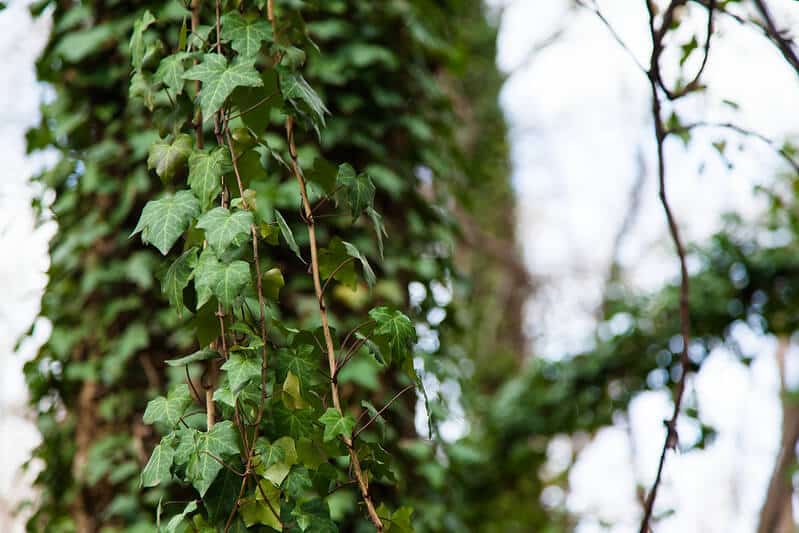
Jade Plant
(Crassula Ovata) This common house and garden plant can cause your Doodle to vomit, slow down your Doodle’s heart rate, cause incoordination and depression.
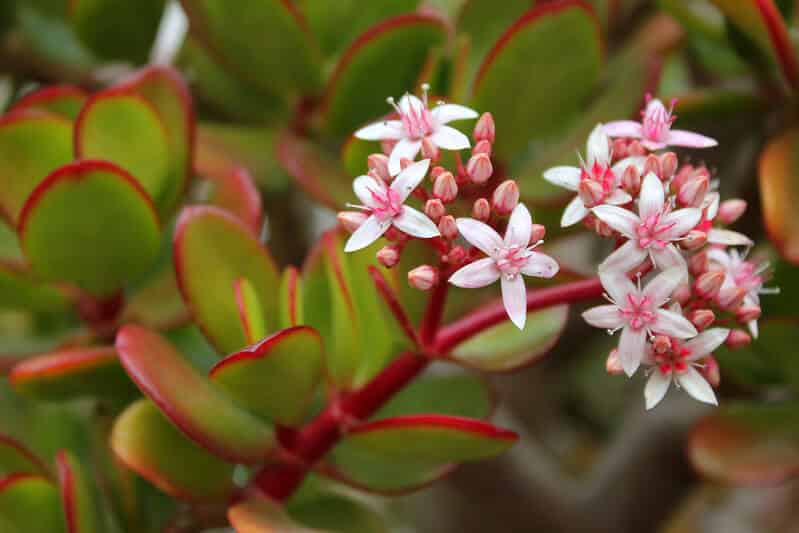
Dumb Cane
(Dieffenbachia) and Philodendron – both of these houseplants contain calcium oxalate crystals, which cause irritation and burning sensation in your doodle’s mouth, lips and tongue. Your dog may also experience excessive drooling, vomiting or difficulty breathing.
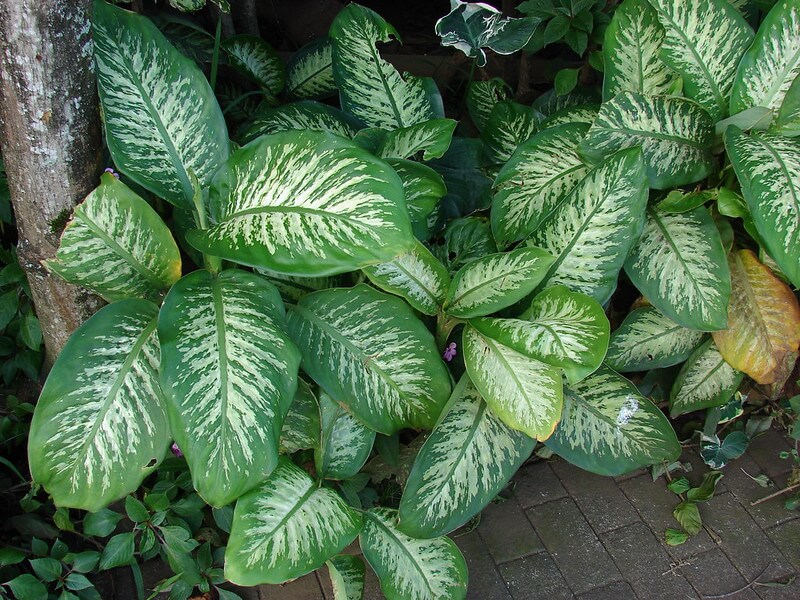
Sago Palm
Also called Cardboard Palm – extremely poisonous if ingested, as it contains a toxin called cycasin, which causes liver damage and can lead to death. Symptoms to look out for: increased thirst, vomiting, jaundice, bloody diarrhea and bruising.
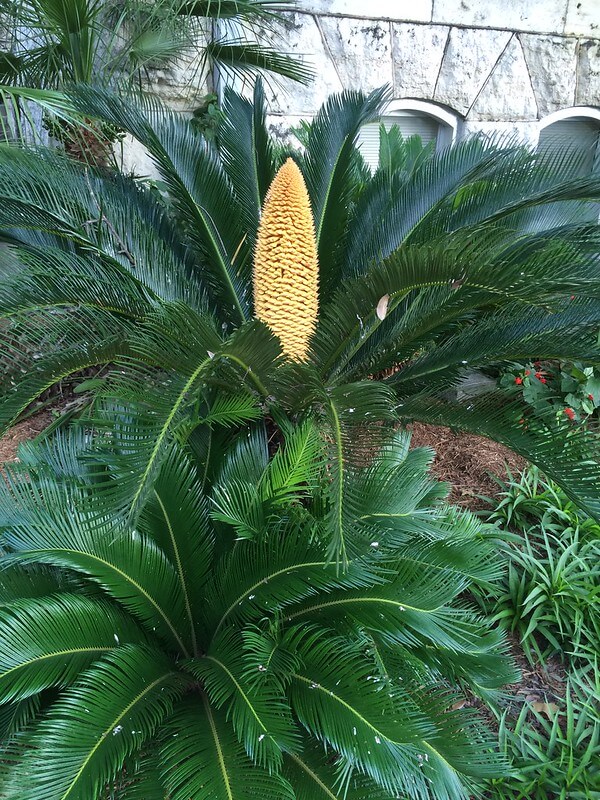
Lilies
Most Lilies should be avoided because of high toxicity. These include Kafir Lily, Peace Lily (Mauna Loa), Calla Lily, Glory Lily, Lily of the Valley, Peace Lily and Flamingo Lily.
You should also avoid plants like Alocasia, Arrowhead Plant, Bird of Paradise, ZZ Plant, Aloe Vera, and Mistletoe.
Garden Plants – Top 5 Poisonous Plants for Dogs
Azalea
This flower is found both indoors and outdoors. Unfortunately, you should avoid them at all costs. Azaleas are one of the most poisonous plants for dogs and can be fatal if eaten. Symptoms of toxicity include depression, nausea, vomiting, difficulty breathing and coma.
Yew
Including Western Yew and Japanese Yew. May cause nausea, stomach pain, vomiting, excess drooling and can lead to coma and death.
Foxglove
Symptoms start with nausea, weakness and vomiting. If not treated, ingestion can cause heart failure and, ultimately, death.

Oleander
Causes similar symptoms as other garden plants mentioned above, but also bloody diarrhea and paralysis. Eating Oleander can lead to coma and death.
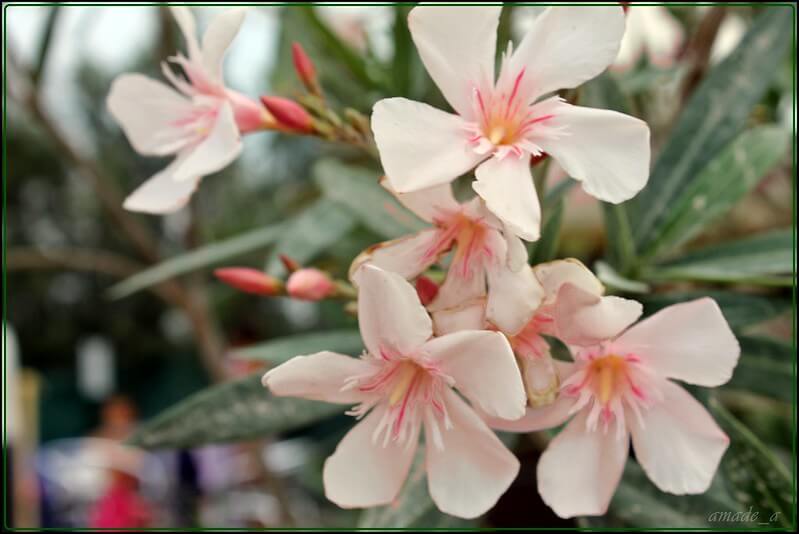
Milkweed
Contains different types of toxins that cause symptoms like excess drooling, diarrhea, weakness and anorexia, heart issues, kidney and liver failure, coma and can be fatal.
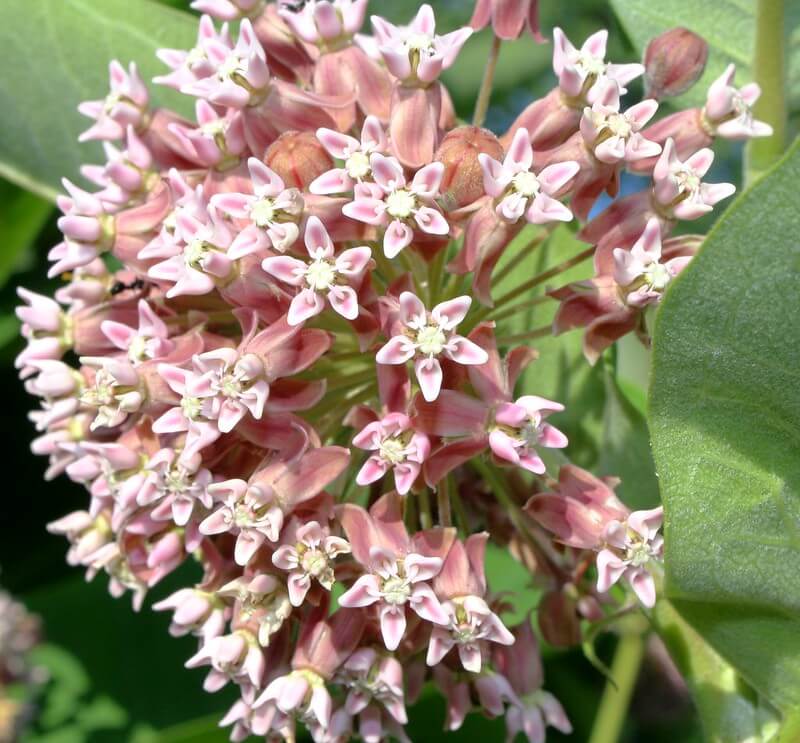
Furthermore, you should not let your Doodle near a Castor Oil Plant (Ricinus communis), as it’s extremely poisonous and lethal for dogs. This plant is not commonly found in gardens, but rather in parks and other public outdoor areas.
Toxicity Symptoms to Look Out For
Dog poison symptoms from poisonous plants include:
- Depression
- Loss of coordination
- Paralysis of the rear legs
- Vomiting – possibly bloody
- Low body temperature
- Skin irritation
- Stomach irritation
- Low blood sugar
- Liver disease/failure
- Renal disease/failure
- Diarrhea – possibly bloody
- Fluctuations in heart rate
- Agitation or lethargy
- Tremors
- Seizures
- Drooling
- Weakness
- Loss of coordination or unstable walking
- Difficulty breathing
If you suspect that your dog is showing toxicity symptoms from any of the aforementioned poisonous plants, contact your veterinarian immediately. If caught at the right time, your Doodle can get better with the appropriate help.
Safe, Non-Toxic Plants for Dogs
Now that we’ve covered the most dangerous house and garden plants for your Doodle, here’s a list of safe plants that you can bring home.
5 Safe Indoor Plants for Dogs
- Boston Fern
- African Violet
- Baby’s Tears
- Blue Echeveria
- Prayer Plant and Spider Plant
Complete List of Extremely Poisonous Plants for Dogs
Here are all the poisonous plants known to cause serious side effects in dogs. The ASPCA also has a great list of all the toxic and non-toxic plants for dogs – complete with photos – that you should check out.
- Adam-and-Eve (also called: Arum, Lord-and-Ladies, Wake Robin, Starch Root, Bobbins, Cuckoo Plant)
- African Wonder Tree
- Aloe
- Amaryllis (also called: Belladonna lily, Saint Joseph lily, Cape Belladonna, Naked Lady, Barbados lily)
- American Mistletoe
- Ambrosia Mexicana (also called: Jerusalem Oak, Feather Geranium)
- American Mandrake (also called: Mayapple, Indian Apple Root, Umbrella Leaf, Wild Lemon, Hog Apple, Duck’s Foot, and Raccoonberry)
- American Yew (also called: Canada Yew, Canadian Yew)
- Apple (including crabapples; stem, leaves and seeds contain cyanide, but the fruit is okay for dogs)
- Apricot (stems, leaves, and pit contain cyanide)
- Arrow-Head Vine (also called: Nephthytis, Green Gold Naphthysis, African Evergreen, Trileaf Wonder)
- Australian Ivy Palm (also called: Schefflera, Umbrella Tree, Octopus Tree, Starleaf)
- Autumn Crocus (also called: Naked Ladies)
- Azalea
- Baby Doll Ti Plant (also called: Ti-Plant, Good-Luck Plant, Hawaiian TI Plant)
- Barbados Pride (also called: Peacock Flower, Dwarf Poinciana)
- Barbados Pride 2 (also called: Bird of Paradise, Poinciana, Brazilwood)
- Begonia
- Bergamot Orange
- Bird of Paradise Flower (also called: Crane Flower, Bird’s Tongue Flower)
- Bishop’s Weed (also called: False Queen Anne’s Lace, Greater Ammi)
- Bitter Root (also called: Dogbane Hemp, Indian Hemp)
- Bittersweet (also called: American Bittersweet, Waxwork, Shrubby Bittersweet, False Bittersweet, Climbing Bittersweet)
- Black Calla (also called: Solomon’s Lily, Wild Calla, Wild Arum)
- Black Laurel (also called: Dog Hobble, Dog Laurel, Fetter Bush, Sierra Laurel)
- Black Walnut
- Bog Laurel (also called: Pale Laurel)
- Borage (also called: Starflower)
- Boxwood
- Branching Ivy (also called: English Ivy, Sweetheart Ivy, California Ivy)
- Brunfelsia (also called: Lady-of-the-Night, Kiss-Me-Quick, Franciscan Rain Tree)
- Buckwheat
- Burning Bush (also called: Spindle Tree)
- Buttercup (also called: Figwort)
- Butterfly Iris
- Calamondin Orange
- Calla Lily (also called: Trumpet Lily, Arum Lily, Pig Lily, White Arum, Florist’s Calla, Garden Calla)
- Caraway
- Cardboard Palm (also called: Cardboard Cycad)
- Castor Bean Plant
- Carnation
- Chamomile
- Chandelier Plant (also called: Devils Backbone)
- Cherry (stem, leaves, and pit)
- Chinaberry Tree (also called: Bead tree, China Ball Tree, Paradise Tree, Persian Lilac, White Cedar, Japanese Bead Tree, Texas Umbrella Tree, Pride-of-India)
- Chinese Evergreen
- Chinese Jade (also called: Silver Jade Plant, Silver Dollar)
- Chives
- Chrysanthemum (also called: Mums)
- Clematis (also called: Virgin’s Bower)
- Clivia Lily
- Coffee Tree
- Coleus (also called: Bread-and-Butter Plant, Spanish Thyme, East Indian Thyme)
- Corn Plant (also called: Dragon Tree)
- Cow Parsnip (also called: Giant Hogweed)
- Cowbane
- Cyclamen
- Daffodil (especially the bulbs)
- Dahlia
- Daisy
- Desert Rose (also called: Desert Azalea, Mock Azalea)
- Deadly Nightshade (also called: Climbing Nightshade, Poisonous Nightshade, Woody Nightshade, and Blue Nightshade)
- Dieffenbachia (also called: Dumb Cane)
- Dog Daisy
- Eastern Star
- Elephant Ears (also called: Taro, Malanga, and Caladium)
- Elephant-Ear Begonia
- Emerald Fern (also called: Emerald Feather, Asparagus Fern)
- Epazote (also called: Mexican Tea)
- Eucalyptus
- Fetterbush (also called: Maleberry, Staggerberry)
- Fleabane (also called: Horseweed, Showy Daisy)
- Florida Beauty (also called: Gold Dust Dracaena, Spotted Dracaena)
- Foxglove
- Garlic
- Gardenia (also called: Cape Jasmine)
- Geranium
- Giant Dracaena (also called: Palm Lily, Grass Palm)
- Gladiola
- Glory lily (also called: Gloriosa Lily, Climbing Lily, Superb Lily)
- Good Luck Plant (also called: Golden Birds Nest, Snake Plant)
- Grapefruit (skin and plant parts; fruit isn’t toxic)
- Heavenly Bamboo (also called: Sacred Bamboo)
- Hellebore (also called: Christmas Rose, Easter Rose)
- Holly (also called: American Holly, English Holly, European Holly, Oregon Holly, Inkberry, Winterberry)
- Hops
- Horse Chestnut (also called: Buckeye)
- Hosta
- Hyacinth
- Hydrangea
- Indian Rubber Plant (also called: Fig, Weeping Fig)
- Iris (also called: Flag, Snake Lily, Water Flag)
- Iron Cross Begonia
- Jack-in-the-Pulpit
- Jade Plant (also called: Baby Jade, Dwarf Rubber Plant, Chinese Rubber Plant, Japanese Rubber Plant)
- Japanese Yew (also called: Buddhist pine or Southern yew)
- Jerusalem Cherry (also called: Winter Cherry)
- Jonquil
- Lambkill (also called: Sheep Laurel)
- Larkspur
- Laurel (also called: Mountain Laurel, Bay Laurel)
- Lavender
- Leek
- Lemon (skin and plant parts; fruit is non-toxic)
- Lemon Grass
- Lemon Verbena
- Lily of the Valley
- Lily-of-the-Valley Bush (also called: Andromeda Japonica)
- Lime (skin and plant parts; fruit is edible)
- Lobelia (also called: Cardinal Flower, Indian Pink)
- Locust
- Lovage
- Macademia Nut
- Madagascar Dragon Tree
- Mapleleaf Begonia
- Marijuana (also called: Indian Hemp, Hashish)
- Marjoram
- Mayweed
- Metallic Leaf Begonia
- Milkweed
- Mint
- Mole Bean Plant
- Morning Glory
- Narcissus (also called: Paper White)
- Nightshade (also called: Black Nightshade)
- Oleander
- Onions
- Orange (skin and plant parts; fruit isn’t toxic)
- Oregano
- Painter’s Pallet (also called: Flamingo Lily, Flamingo Flower, Pigtail Plant, and Oilcloth Flower)
- Parsley
- Peace Begonia
- Peach (stem, leaves and pit)
- Peace Lily
- Pencil Cactus (also called: Sticks of Fire)
- Peony
- Periwinkle (also called: Running Myrtle)
- Philodendron
- Plum (stem, leaves and pit)
- Poinsettia
- Poison Hemlock (also called: Deadly Hemlock, Winter Fern, California Fern, Nebraska Fern)
- Pothos (also called: Golden Pothos, Taro Vine, Devil’s ivy)
- Prayer Bean (also called: Rosary Bean, Buddhist Rosary Bean, Indian Bean, Indian Licorice)
- Prickly Ash (also called: Angelica Tree, Prickly Elder, Hercules’ Club, Devil’s Walking Stick)
- Primrose
- Privet (also called: Wax-Leaf)
- Purslane (also called: Moss Rose, Rock Moss)
- Ragwort (also called: Golden Ragwort)
- Ranger’s Button (also called: Swamp White Heads)
- Red-Marginated Dracaena
- Red Sage (also called: Shrub Verbena, Lantana, Yellow Sage)
- Rex Begonia
- Rhubarb
- Sago palm
- Shamrock Plant
- Skunk Weed (also called: Skunk Cabbage, Swamp Cabbage, Polecat Weed)
- Sorrel
- Spring Parsley
- John’s Wort (also called: Klamath Weed)
- Striped Dracaena
- Sweet Pea (also called: Everlasting Pea)
- Sweet William (also called: Pinks)
- Tahitian Bridal Veil
- Tarragon
- Tobacco (also called: Tree Tobacco, Mustard Tree, Nicotiania)
- Tomato Plant
- Tulips
- Wandering Jew
- Watercress
- Wisteria
- Yarrow (also called: Milfoil)
- Yucca
To conclude, the list of poisonous plants for dogs is extremely extensive. So before you plant any new flowers or bushes in your yard, make sure to do your research.
Learn How to Care for Your Doodle Puppy!

Perfect for first-time Doodle parents, get ALL your questions answered, including questions new Doodle parents don’t even think to ask.
Plus, get $700 worth of Bonus Materials for FREE, including:- Doodle Parenthood Community and Support Group ($190 value)
- Doodle Puppy Growth Tracker ($20 value)
- EMERGENCY Cheatsheet: When To Call The Vet Immediately ($50 value)
- HELP! Button ($145 value)
- And SO MUCH MORE!
The information on this page is for informational purposes only. It is not intended to be a substitute for qualified professional veterinary advice, diagnosis, or treatment. Always seek the advice of your veterinarian or other qualified animal health provider with any questions you may have.








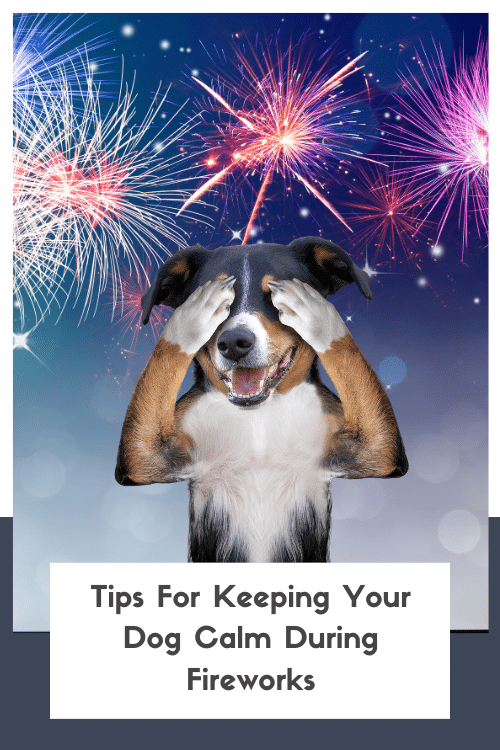
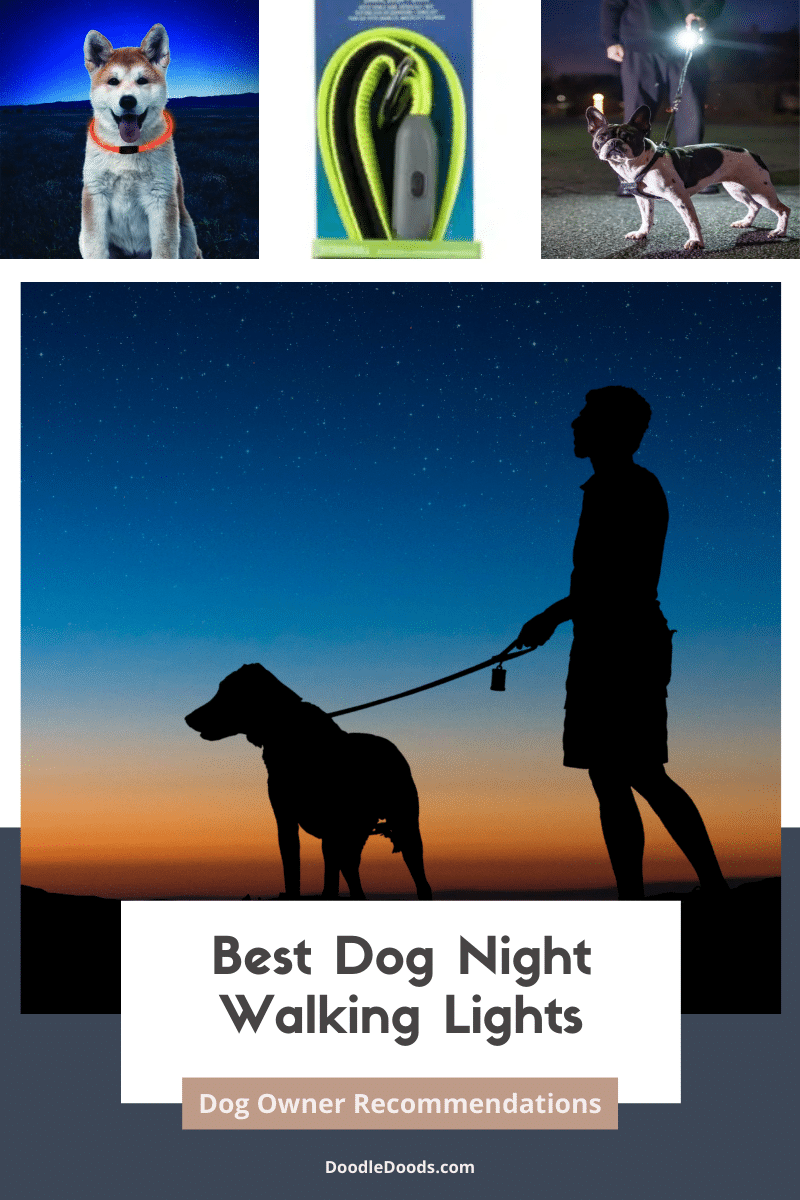


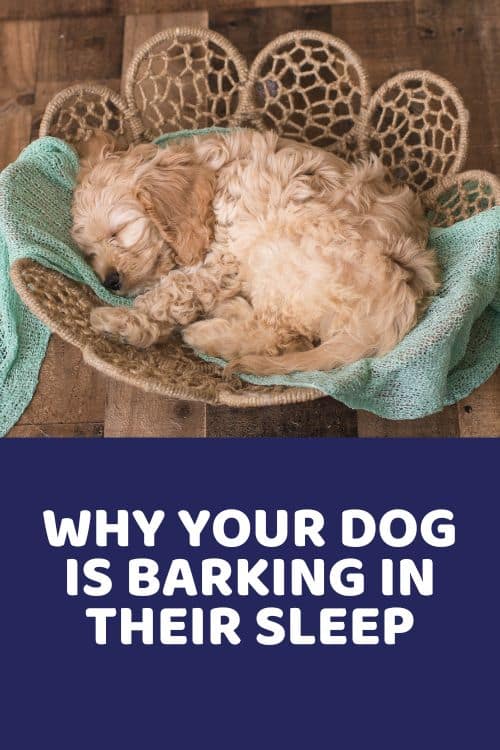
I watched the video on using Cowboy Magic on a doodle. I am a big fan of this product, on my horse. Fortunately Charlie, a Springerdoodle, has not had any matting problems. His hair is wavy and 3 inches long. He is 5 months old and is getting his permanent coat. So far his face is getting lighter but his color remains mostly chocolate and long.
May 8, 2023 at 7:41 am